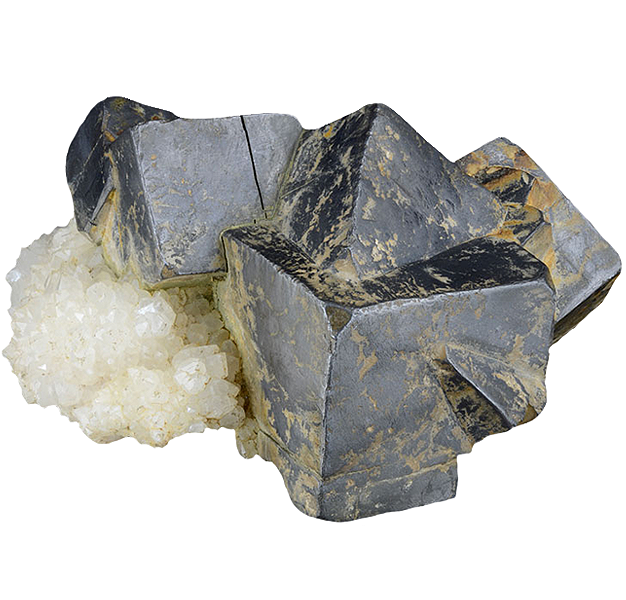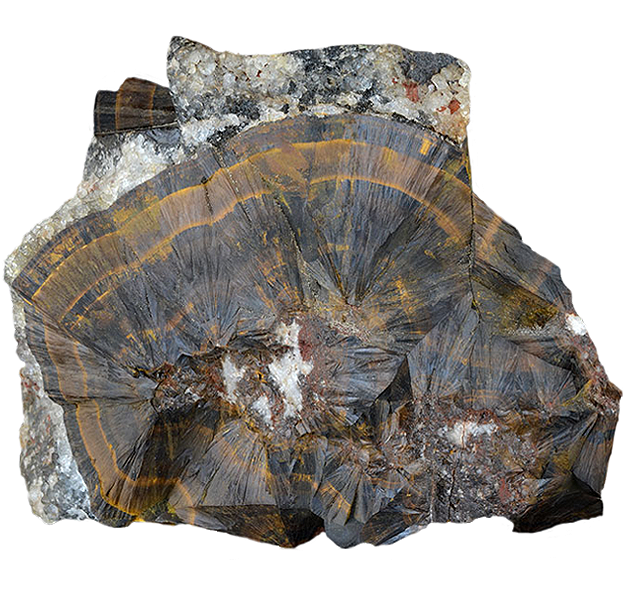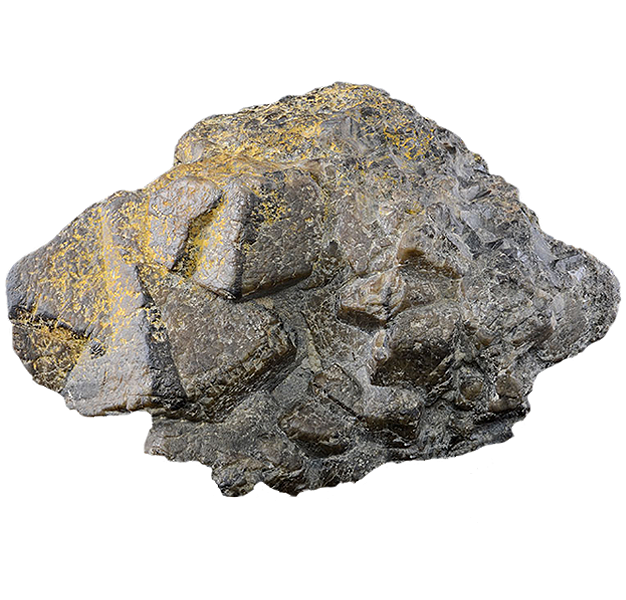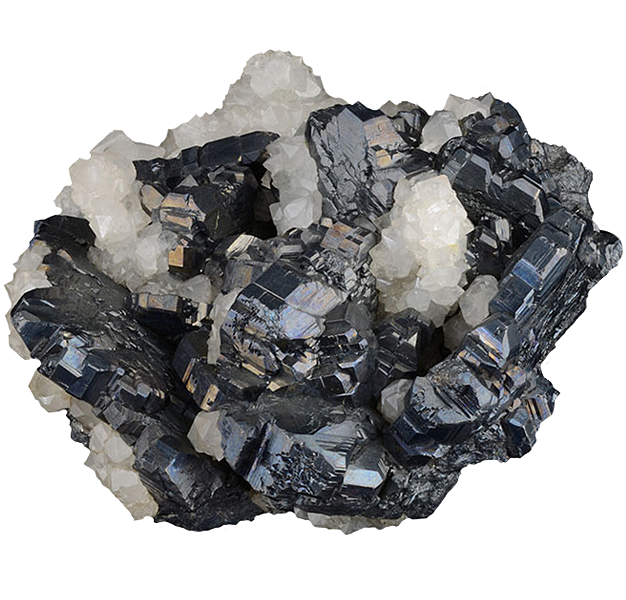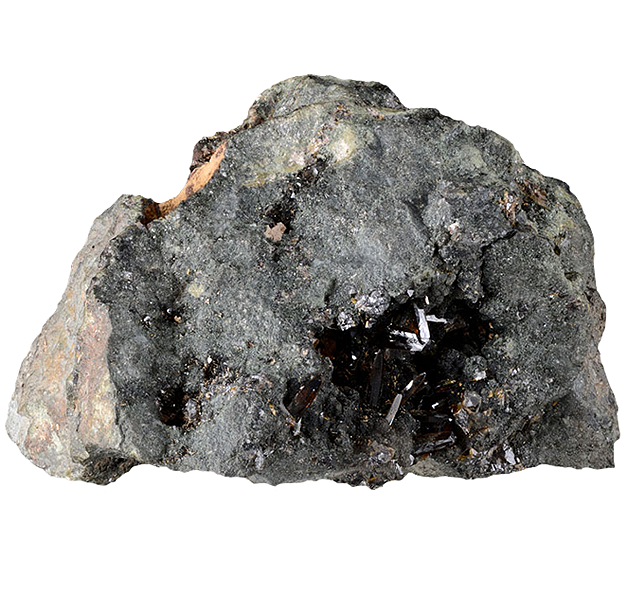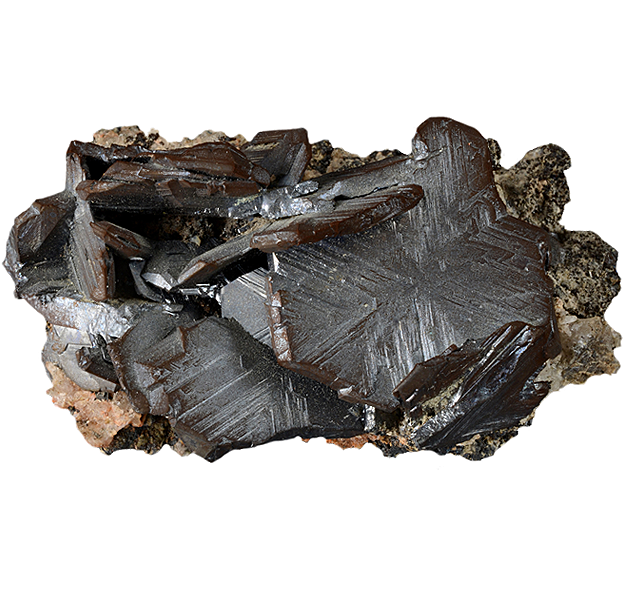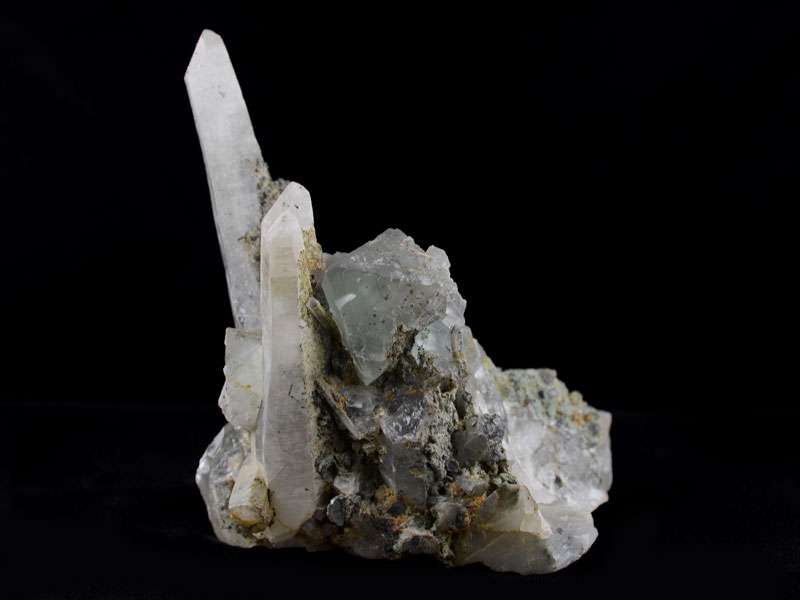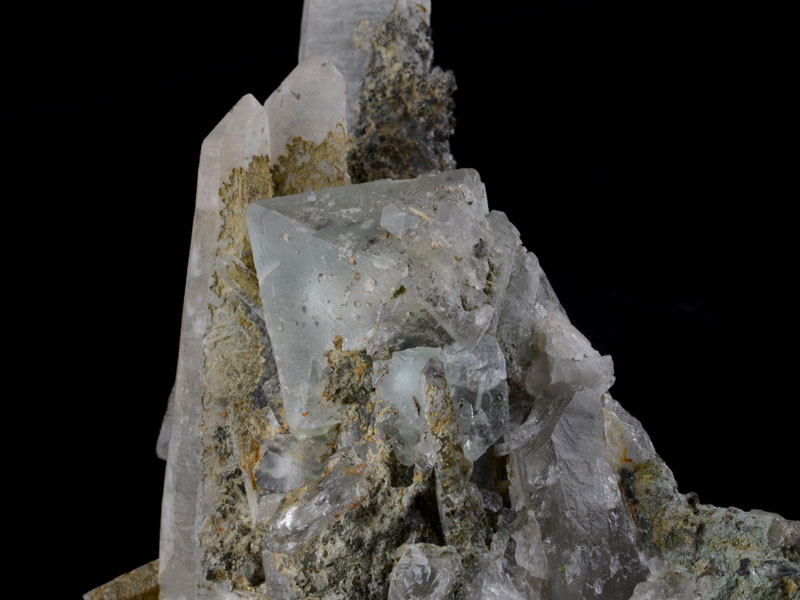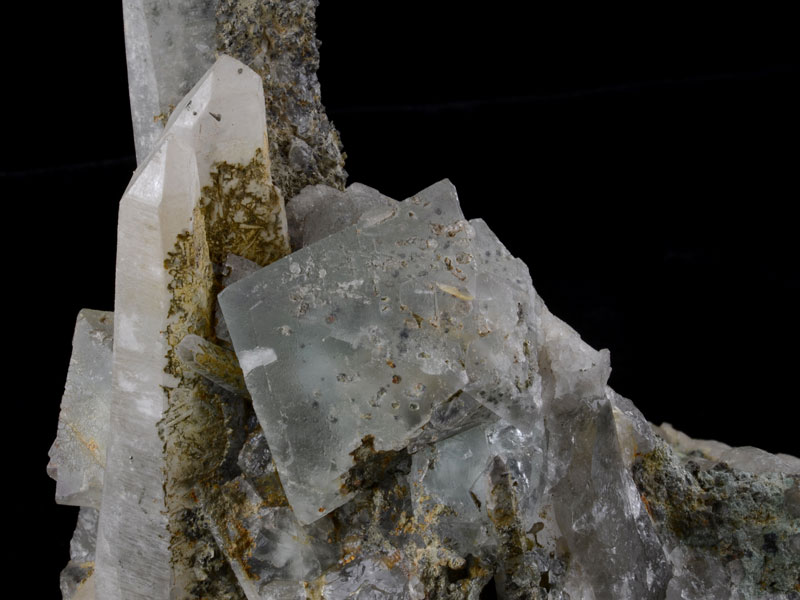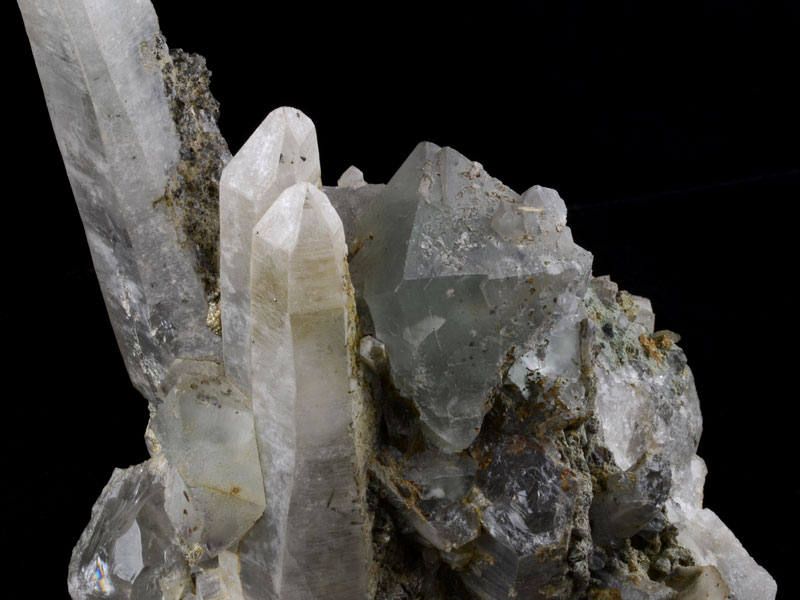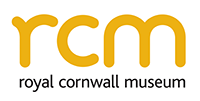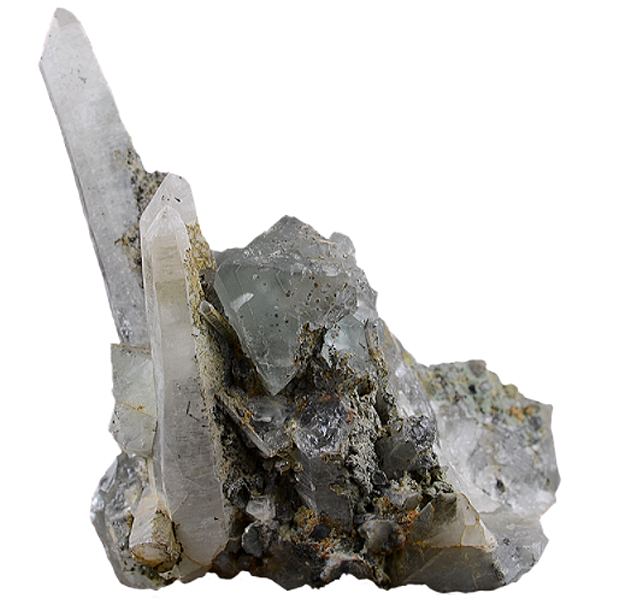
Fact sheet
Quartz (silicon dioxide) is a common mineral found in veins alongside the valuable ores. Such commercially unimportant minerals are often termed gangue.
This specimen shows tall prismatic quartz crystals, along with an octahedral-shaped crystal of fluorite (calcium fluoride). It is part of the collection of minerals compiled by Cornish gentleman–collector Philip Rashleigh in the 18th century. It is illustrated in volume 1 of his publication Specimens of British Minerals and is described as:
"A double four sided pyramid of fluor, joined base to base, very large, semi-transparent, and of a light green colour, with six sided crystals of quartz. From Poldice, in Gwennap."
Poldice was active in the 16th century, making it one of the earliest recorded mines in Cornwall. Edward D. Clarke (later to become Professor of Mineralogy at Cambridge) descended Poldice on his tour of Cornwall in 1791:
"At about eighty fathoms we came to a vein of copper ore …. hardly room to move their bodies, in sulphurous air, wet to the skin and buried in solid rock …. pecking out the hard ore by the glimmering of a small candle."
Chemical Formulae: fluorite = CaF2
quartz = SiO2
Specimen no. TRURI: 1903.1.938
Location: Poldice, Gwennap
Grid Reference: SW 740 427
Mindat Fluorite http://www.mindat.org/min-1576.html
Mindat Quartz http://www.mindat.org/min-3337.html
This Collection focuses on Cornwall and West Devon’s mineralogical and mining heritage. The specimens it features are drawn from the collection of the Royal Institution of Cornwall (RIC) held at the Royal Cornwall Museum (RCM).
This collaborative project involving the RCM, the Cornish Mining World Heritage Site and The Open University explores how access to the RIC’s mineral collection and the stories it can tell can be widened using digital technology. It includes radioactive minerals from Cornwall that would otherwise be inaccessible to the public for health and safety reasons.
Sample details
More from this collection
